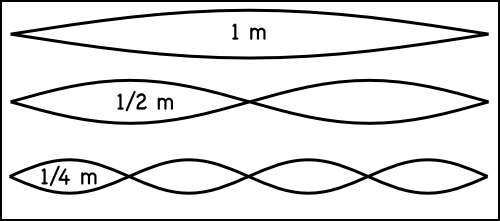
Play two sound tones that are close together in frequency and the sound waves will overlap to create a kind of oscillating sound called a beat.

Below are two tones: separated and then mixed — listen for the beat.
| Frequency | Sound File (mp3) | |
|---|---|---|
| Tone 1 | 347 Hz | 1m.mpg |
| Tone 2 | 357 Hz | 1m-357.mp3 |
| Mixed Tones (with beat) | 347 Hz + 357 Hz | beat_10.mp3 |
Interestingly, you can sometimes hear the beat as a third tone if the frequency difference is just right. The frequency of the beat is the difference between the frequency of the two tones.
Notes
The SoX command to play two notes with frequencies of 347 and 357 Hz is:
> play -n synth 15 sin 347 sin 357
to make an mp3 file use:
> sox -n beat_10.mp3 synth 15 sin 347 sin 357




